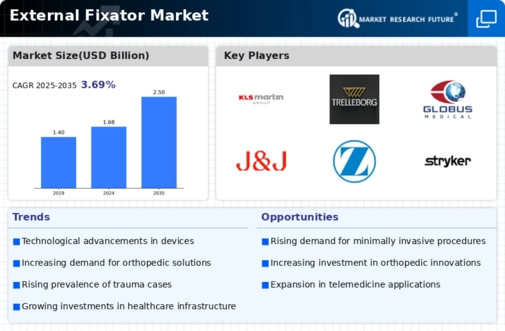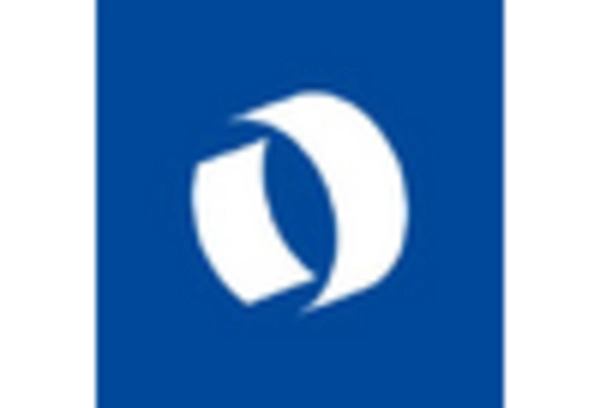Focus on Patient-Centric Designs
The External Fixator Market is increasingly focusing on patient-centric designs that prioritize comfort and usability. Manufacturers are recognizing the importance of creating devices that not only stabilize fractures but also enhance the overall patient experience. This includes ergonomic designs that reduce discomfort and improve mobility during recovery. Recent studies suggest that patient satisfaction is closely linked to the design and functionality of external fixators, leading to a potential increase in market share for companies that prioritize these aspects. As the healthcare landscape evolves, there is a growing emphasis on personalized treatment options, which is likely to drive innovation in the external fixator market. The integration of patient feedback into design processes may further enhance the appeal of these devices, ultimately contributing to market growth.
Increased Demand for Minimally Invasive Solutions
The External Fixator Market is witnessing a surge in demand for minimally invasive surgical solutions. Patients and healthcare professionals alike are increasingly favoring procedures that minimize tissue damage and promote quicker recovery. External fixators, known for their ability to stabilize fractures without extensive surgical intervention, align well with this trend. Market data indicates that the demand for minimally invasive orthopedic procedures has risen significantly, with a projected increase of 8% annually. This shift is largely attributed to the growing awareness of the benefits associated with minimally invasive techniques, such as reduced postoperative pain and shorter hospital stays. Consequently, the external fixator market is likely to expand as more healthcare facilities adopt these innovative solutions to meet patient expectations and improve surgical outcomes.
Rising Incidence of Trauma and Orthopedic Conditions
The External Fixator Market is significantly influenced by the rising incidence of trauma and orthopedic conditions. As urbanization and lifestyle changes continue to contribute to higher rates of accidents and injuries, the demand for effective orthopedic solutions is on the rise. Data indicates that trauma cases, including fractures and dislocations, are expected to increase by approximately 5% annually. This trend is particularly evident in developing regions, where access to advanced medical care is improving. Consequently, external fixators are becoming a preferred choice for orthopedic surgeons due to their effectiveness in managing complex fractures. The growing prevalence of sports-related injuries and road traffic accidents further underscores the need for reliable external fixation solutions, thereby driving the market forward.
Technological Advancements in External Fixator Market
The External Fixator Market is experiencing a notable transformation due to rapid technological advancements. Innovations in materials, such as the use of lightweight composites and biocompatible alloys, enhance the performance and comfort of external fixators. Furthermore, the integration of smart technologies, including sensors and IoT capabilities, allows for real-time monitoring of patient recovery. According to recent data, the market for advanced external fixators is projected to grow at a compound annual growth rate of approximately 6.5% over the next five years. This growth is driven by the increasing adoption of these technologies in surgical procedures, which aim to improve patient outcomes and reduce recovery times. As a result, healthcare providers are increasingly investing in advanced external fixators, thereby propelling the overall market forward.
Government Initiatives and Funding for Healthcare Innovations
The External Fixator Market is benefiting from various government initiatives and funding aimed at promoting healthcare innovations. Many governments are investing in research and development to enhance medical technologies, including external fixation devices. This support is crucial for fostering innovation and improving patient care. Recent reports indicate that government funding for orthopedic research has increased by approximately 10% over the past year, reflecting a commitment to advancing treatment options. Such initiatives not only encourage the development of new external fixators but also facilitate collaborations between public institutions and private companies. As a result, the external fixator market is likely to experience accelerated growth, driven by enhanced product offerings and improved access to cutting-edge technologies.


















Leave a Comment